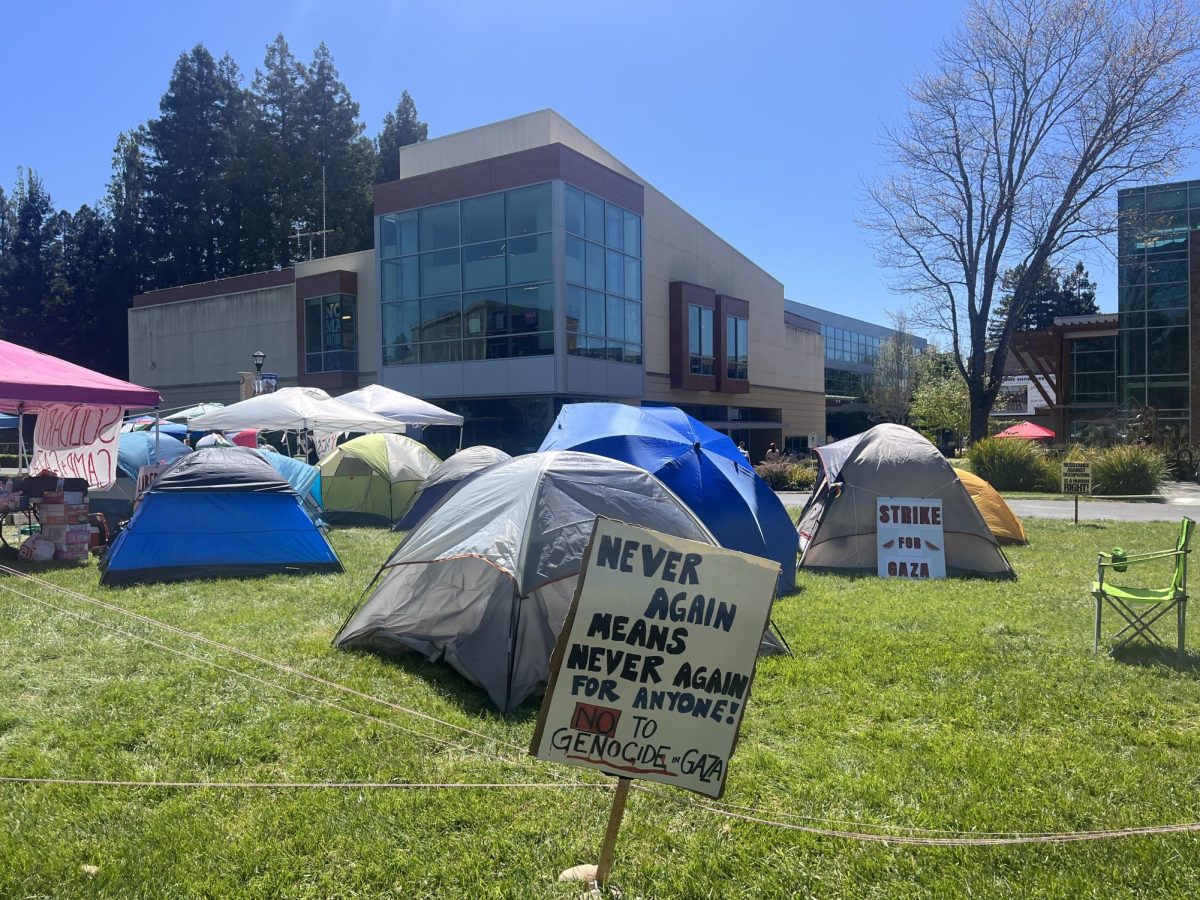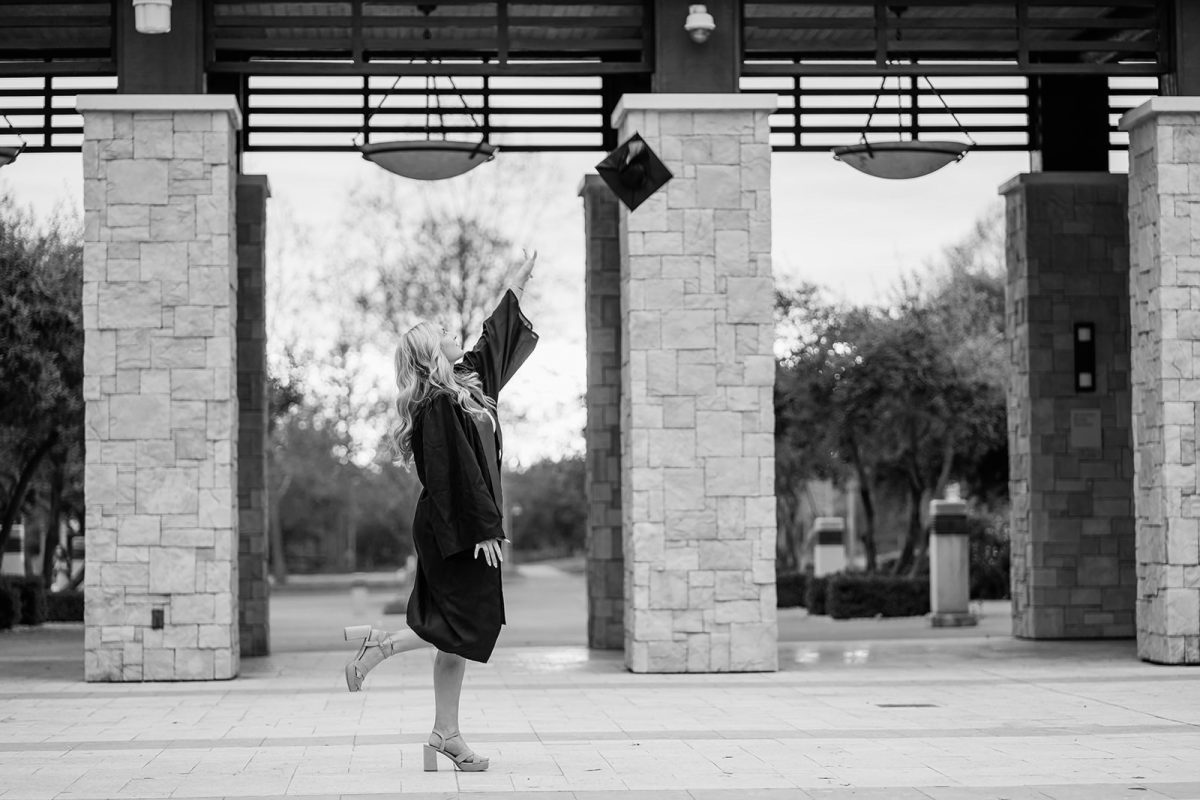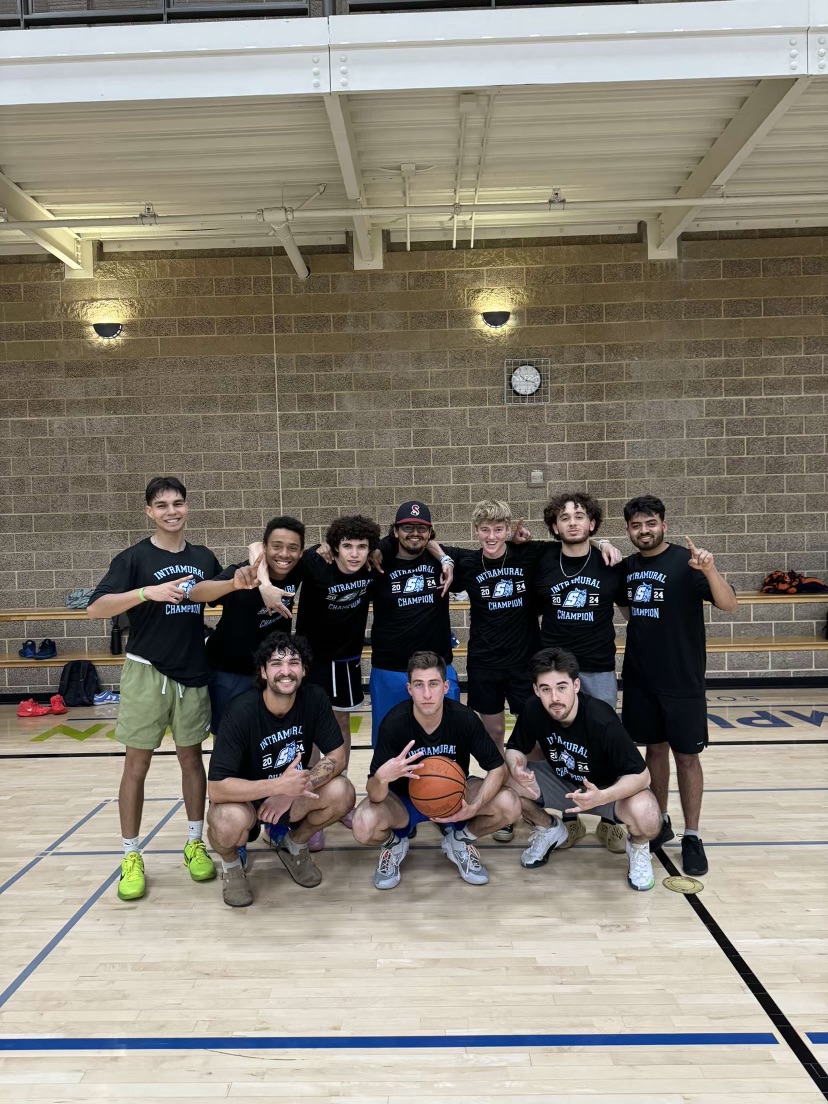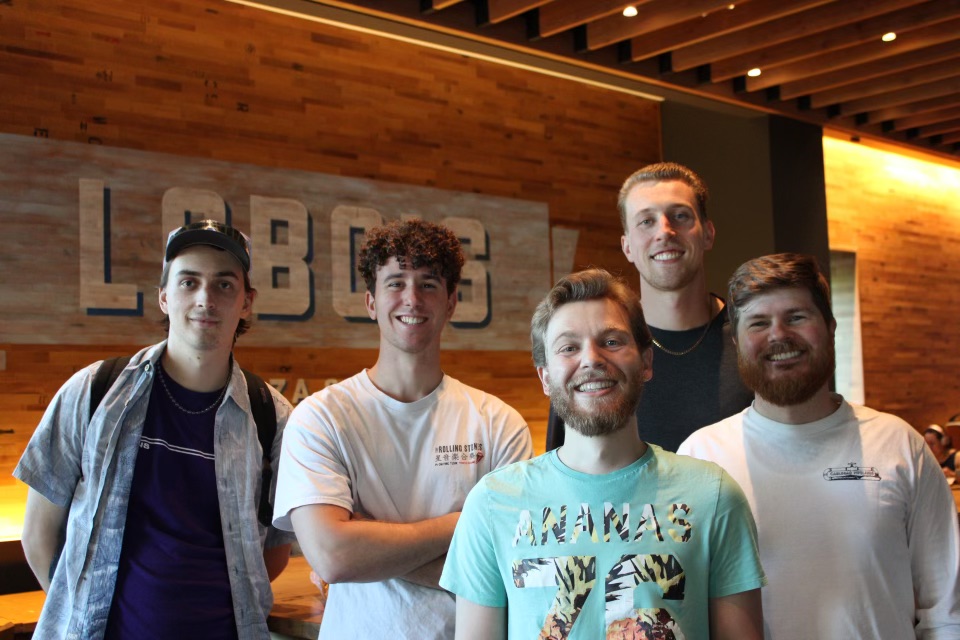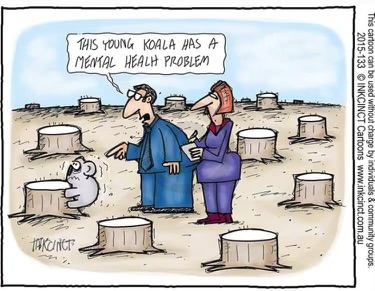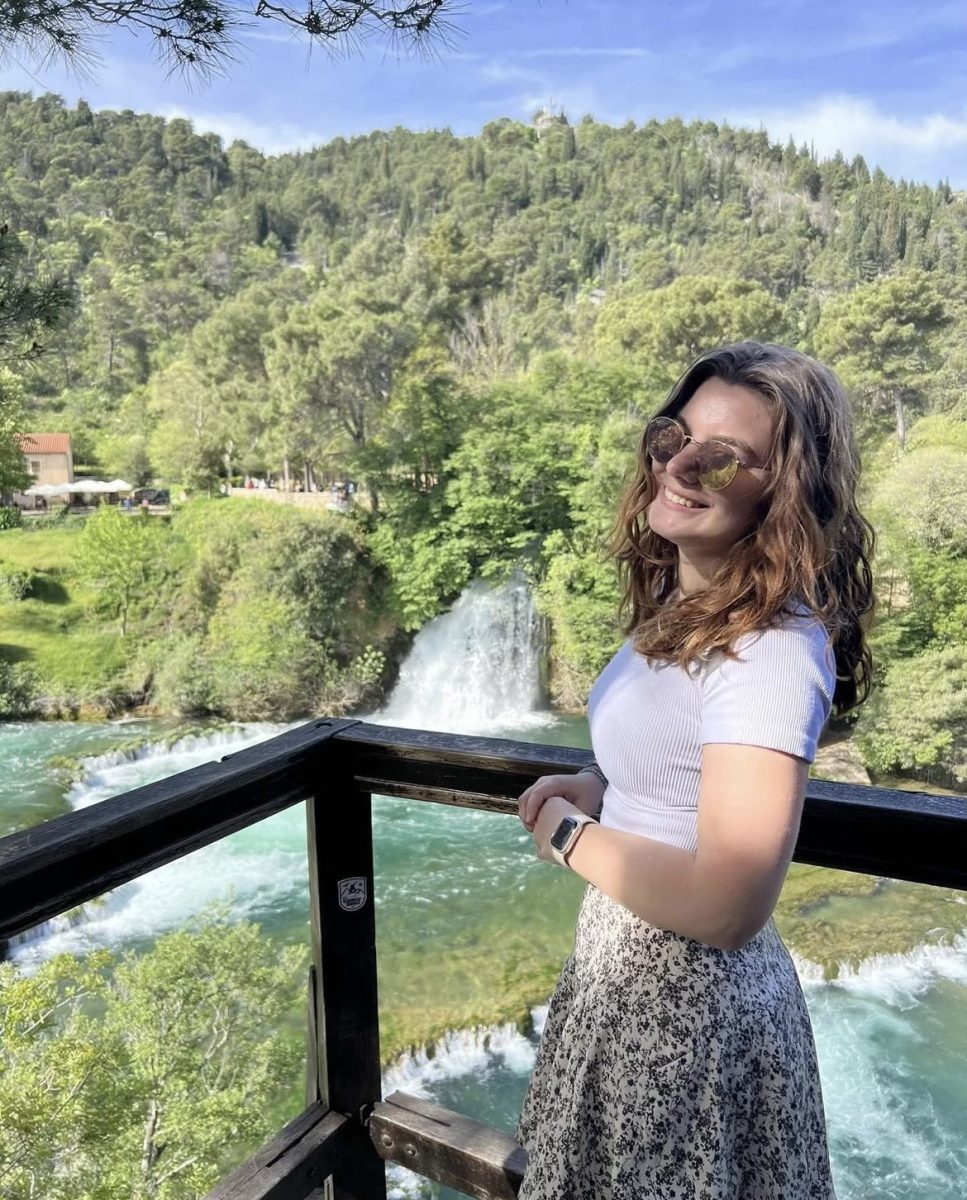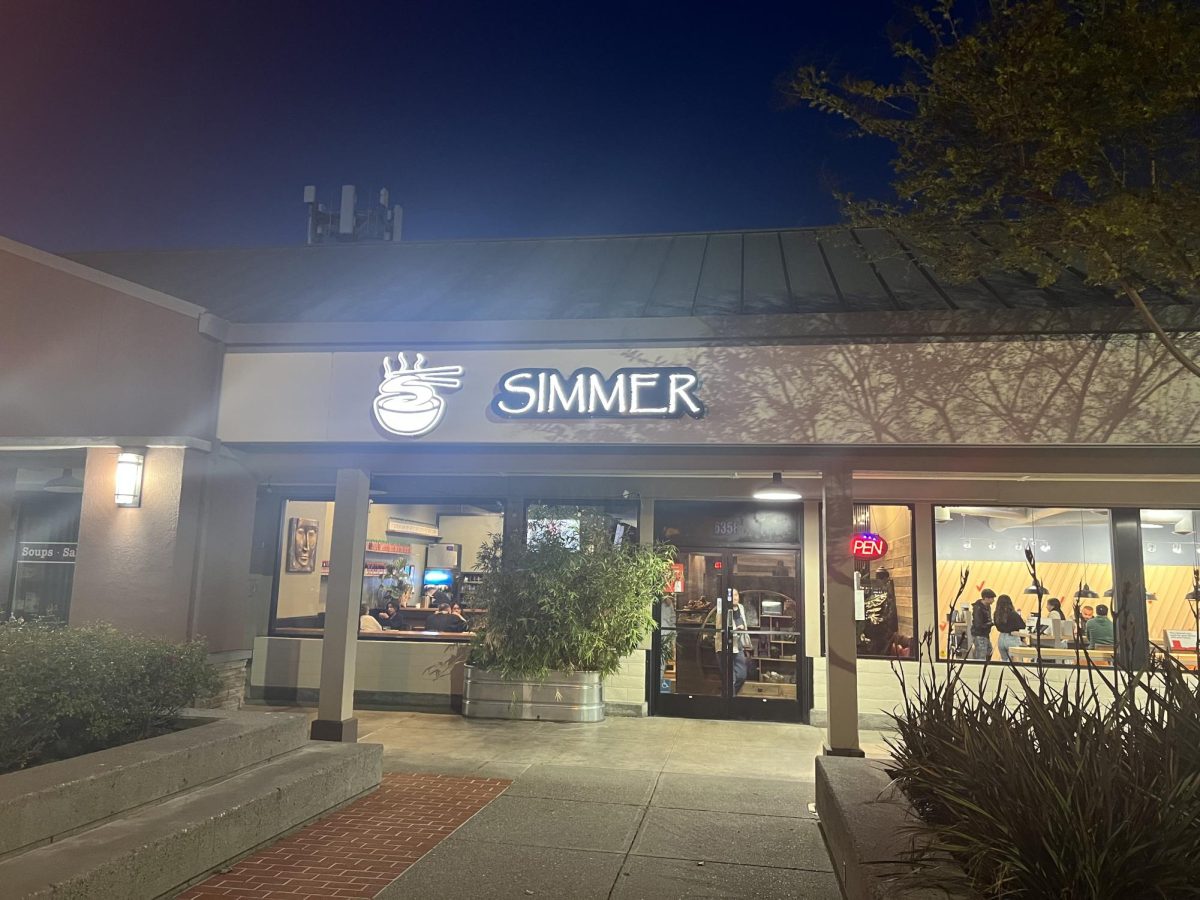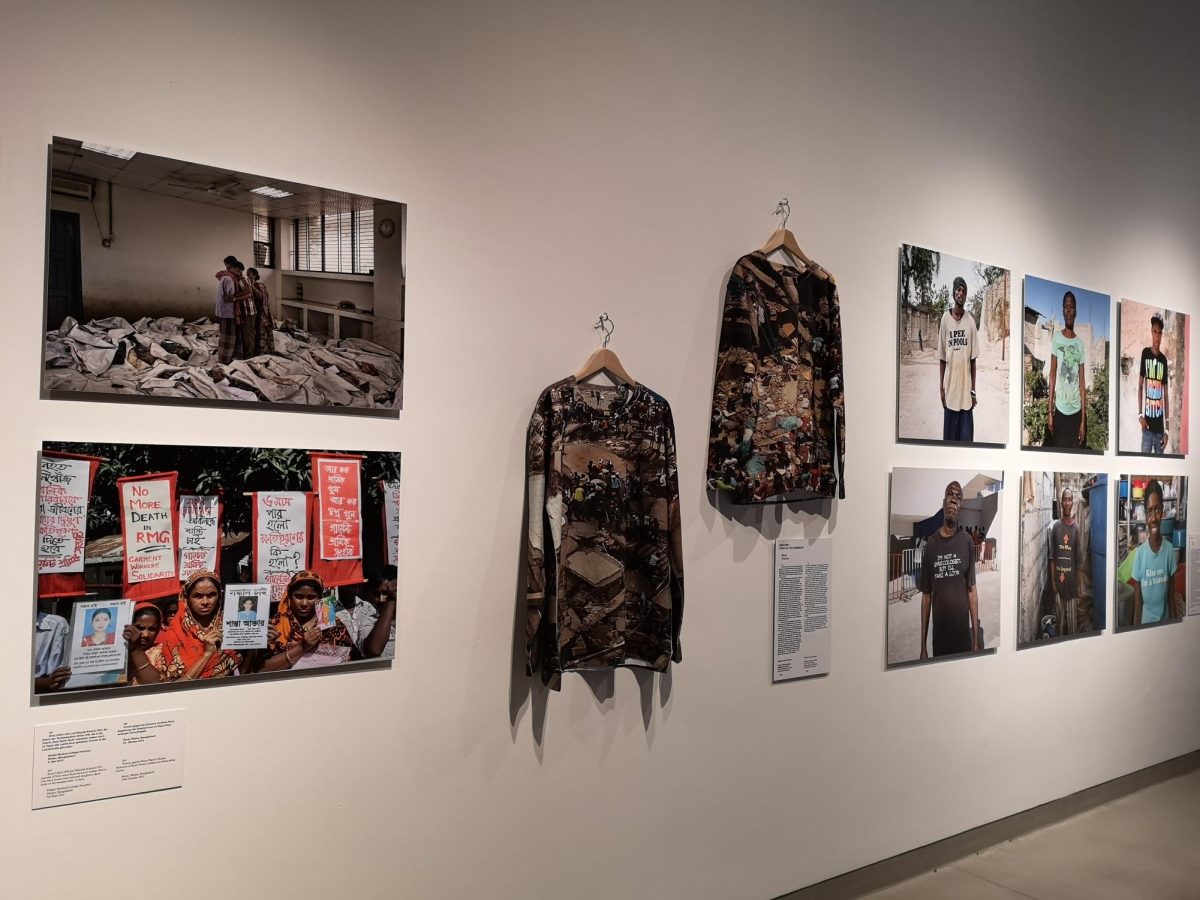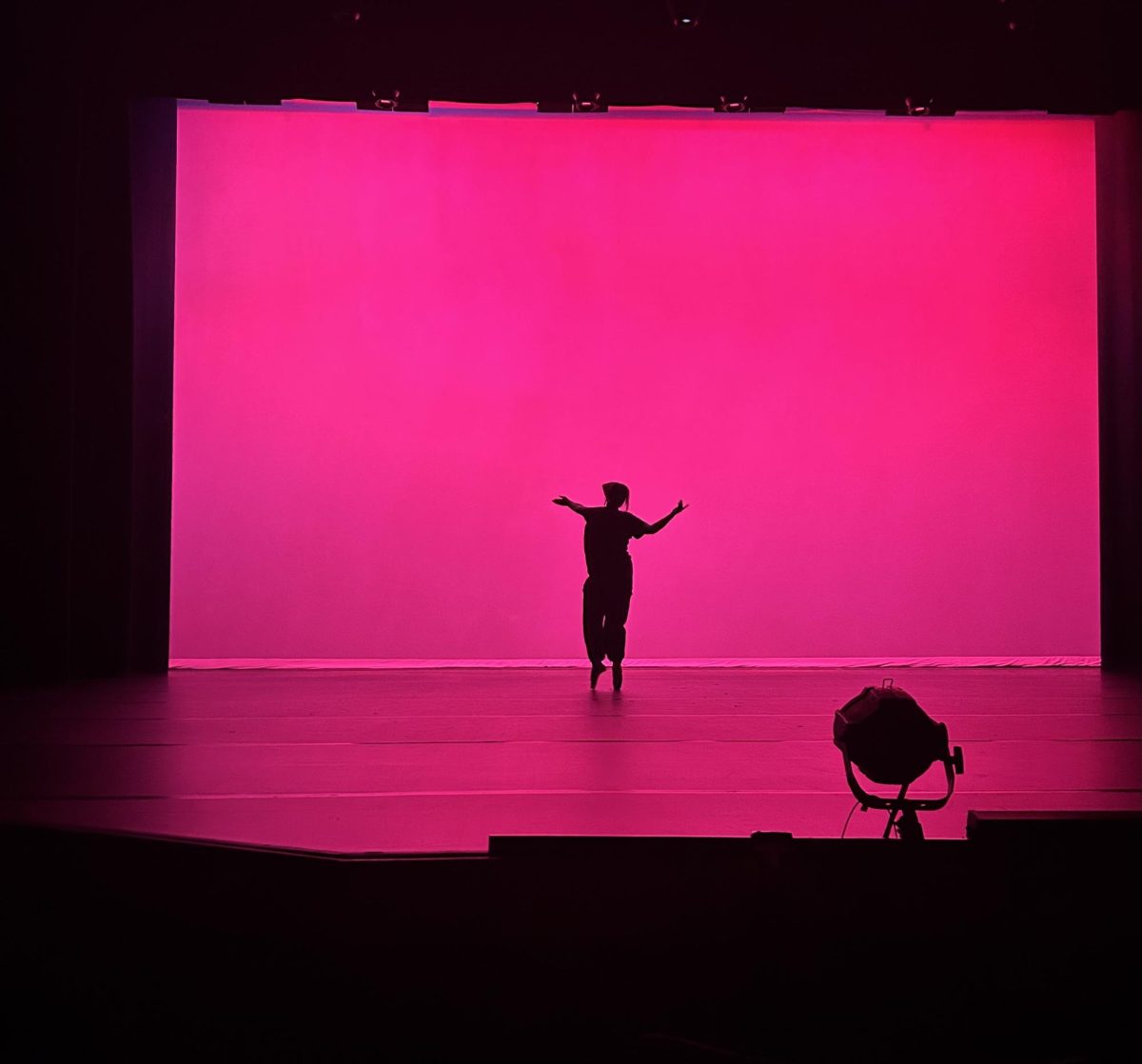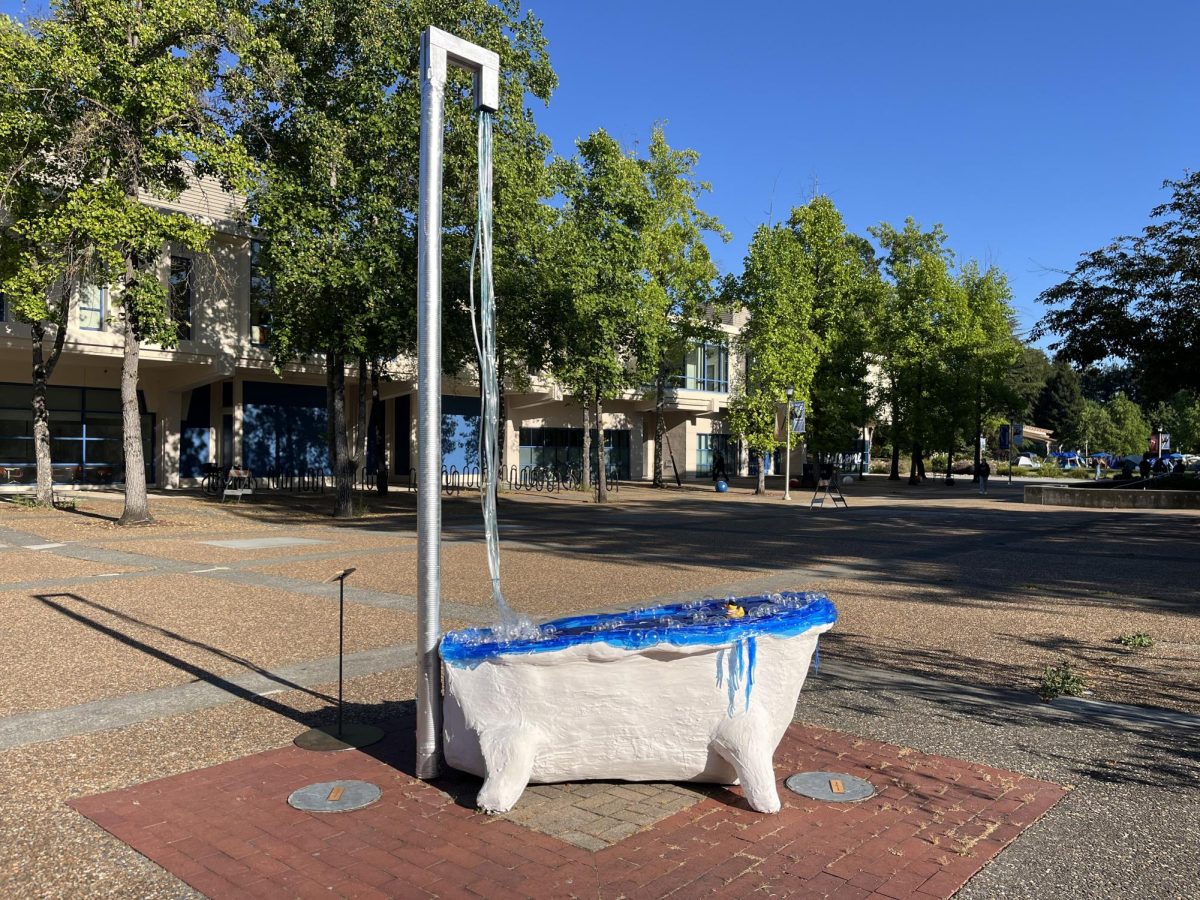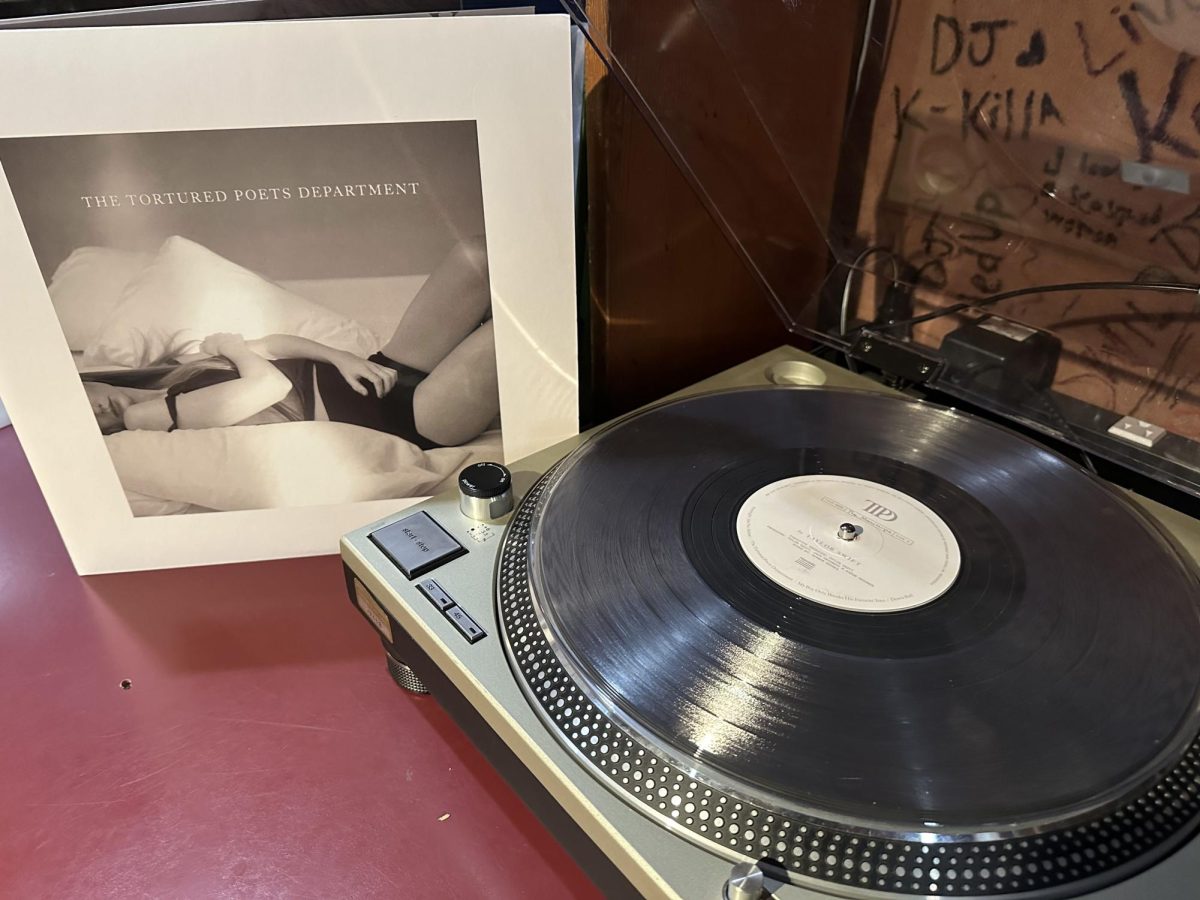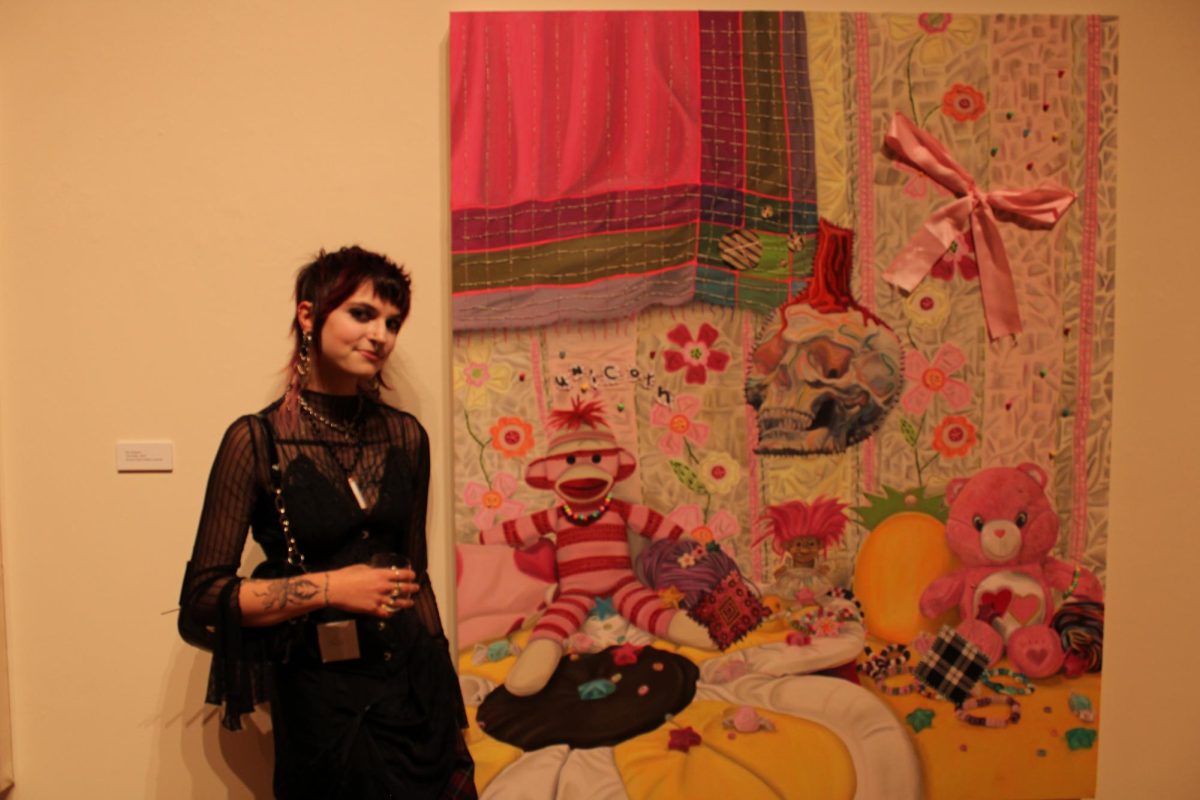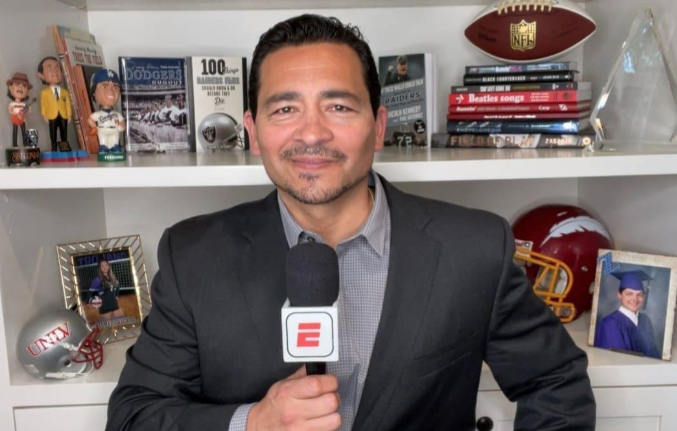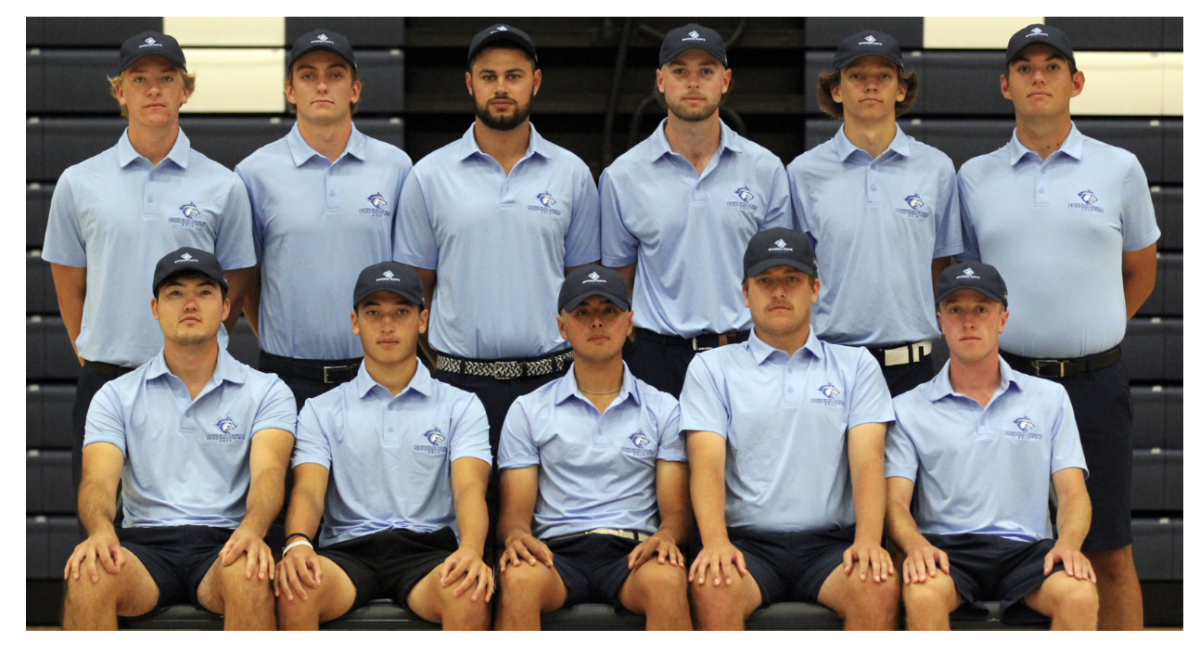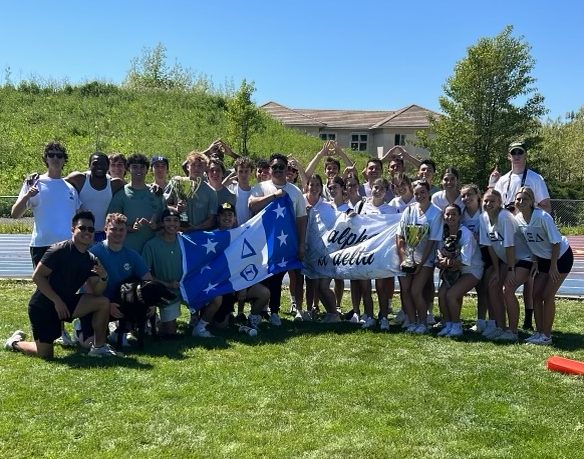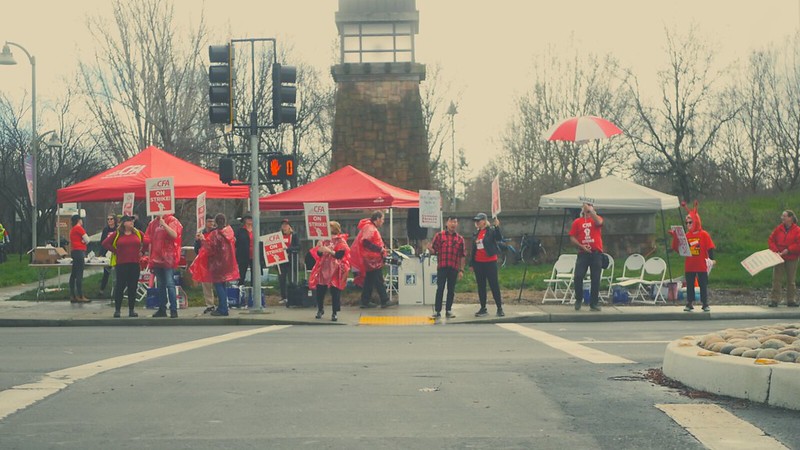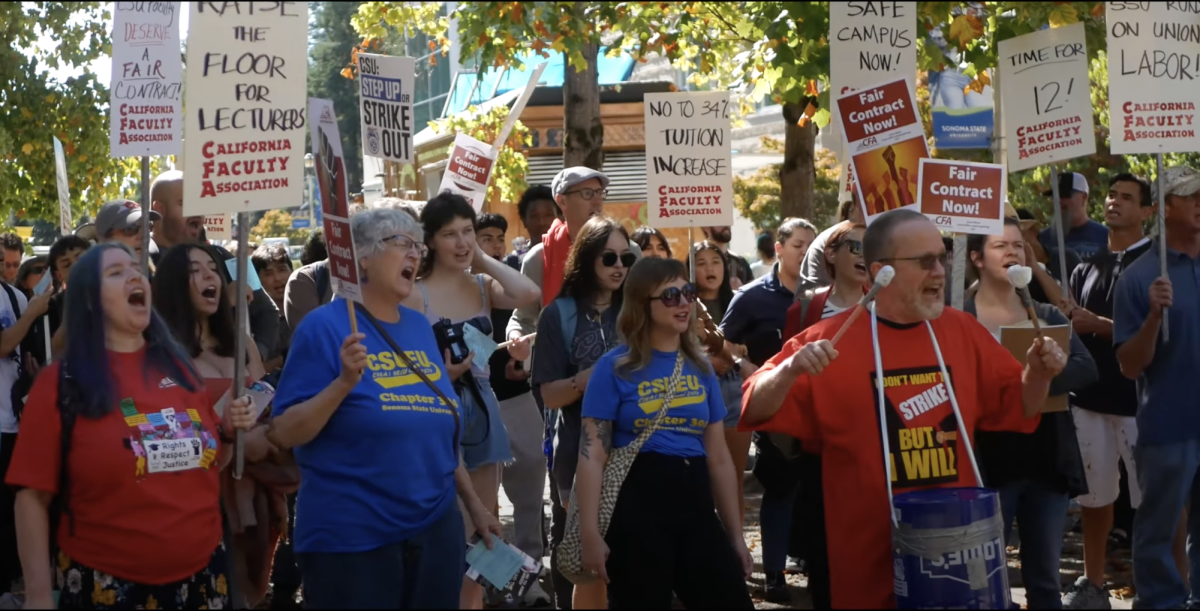A glass of wine to balance out a dinner with the roommates, an ice cold beer on a hot day among friends, a casual picnic in the park with a bottle of sweet sangria, a deck of cards, and great company; these are the scenes where alcohol was typically found and consumed among the youths in Spain.
This past year I lived and studied in Madrid where I experienced the huge difference between our drinking cultures and came to the strong realization that we have an unhealthy relationship with booze, predominantly on college campuses across the U.S.
Sonoma State University is certainly no exception to this observation. At the ripe, young age of 18 we allow our children to die in the name of service. We establish that they are mature enough to carry the responsibility of taking another person’s life, and allow them to purchase the means of doing so, yet prohibit them from purchasing a beer? This lacks a world of logic to me.
What happened in the 1920’s during the prohibition? Everyone partied like crazy and drank away their sorrows and much more.
Isn’t this same rebellious attitude towards prohibition resurfacing among our under aged college and high school youths of today? Has your age really ever stopped you from wanting to take that first swig from the bottle? No, because trying to prohibit and stigmatize something to adolescents generally happens to have the opposite effect and makes them just crave it more. Teenagers, for some reason, are rebellious by nature.
In Spain, the drinking age is 18 and I was probably asked for my ID twice my entire year there. I’ve been back three weeks now and although I’ve been 21 for almost a year now, I somehow feel like a deceiving criminal every time I present my ID to the bouncer at the Cotati Crawl or at our neighborhood Safeway.
The ID inspections never cease to be super intense and uncomfortable. My French roommate from Spain who came to visit for a week pointed out the same uncomfortable feeling he had every time we tried to enter a bar in the city. I’ve picked up the habit of telling all the bouncers “It’s fake!” as I present it to them, it takes off the edge a little and makes me chuckle.
“The drinking culture in the US is much more binge-focused. The idea, instead of enjoying the beverage, is to get as drunk as possible in as little of time as possible,” said Alison Peet-Lukes, a great friend that I made through our program that was sent to Spain, and a fellow Seawolf. “I think this stems from the intense criminalization of alcohol for people who are under aged. It is not only dangerous, but unnecessary.”
And it’s precisely that! Here we go out at 9-10:30 p.m., and the bars and parties end around 2 – 3 a.m. at the latest.
Naturally the goal of culture has become to get as wasted as possible, as fast as possible and do it all over again the next day. There is no such thing as casual drinking. Shots, handle pulls and keg stands are the images that come to mind when I think of an American party or drinking scene.
Whatever happened to those peaceful picnics with sangria, candlelit dinners with wine and the roomies, and those deliciously cold couple of beers?
According to the National Institute on Alcohol Abuse and Alcoholism; the college drinking problems consist of “1,825 college students between the ages of 18 and 24 die each year from alcohol-related unintentional injuries. More than 690,000 students between the ages of 18 and 24 are assaulted by another student who has been drinking. More than 97,000 students between the ages of 18 and 24 are victims of alcohol-related sexual assault or date rape. More than 150,000 students develop an alcohol-related health problem and between 1.2 and 1.5 percent of students indicate that they tried to commit suicide within the past year due to drinking or drug use.”
If the media is constantly sending us messages that range from “alcohol is bad and can kill you” to “alcohol is a necessity for a good time.” Not enough of “alcohol in moderation is fine” then we are continuing to support this unhealthy relationship we’ve created with booze and drinking.
I cannot emphasize more how strongly I believe that if we don’t do something to change the way we,as a society view and use alcohol, than we’re not living in a society that has progressed far enough away from its prohibition era.
We will continue to have college headlines that read “Second Chico State Student dies after alleged drunken driving accident” or “Chico State rethinks party life after death” from sfgate, or as I’m sure we all remember; “Deaths of Irish Students in Berkeley Balcony Collapse.”
I’m not saying that these accidents will cease to happen, and they especially wouldn’t if our laws were to change.
However, I do attribute a lot of our culture’s idiotic mistakes and negative reputation to our crazy love to partying heartily and not remember the many mistakes of yesterday.
Sure, everyone enjoys a good night out, as do I, but all I ask for is to lower the stigma our culture has created around alcohol and allow for everyone to learn at a younger age of the consequences and what it means to drink responsibly.
“Heavy drinking is pretty much expected of you when you first come to college. It’s your first time away from home, no parents to give you rules and it causes you to push your limits in a way. I’ve been through both sides of the spectrum,” said Austin Burmester, a former Sonoma State student. ”When I was a heavy binge drinker, not much mattered. School wasn’t as high of a priority then. I don’t know if it has to do with the age restriction but after about a year after I turned 21, drinking became less important. My drinking slowed down and my priorities became more clear.”
So why not lower t he drinking age and with it the stigma and fear we have surrounding ‘the devil’s juice’?
The detrimental drinking culture
Donate to Sonoma State Star
Your donation will support the student journalists of Sonoma State University. Your contribution will allow us to purchase equipment and cover our annual website hosting costs.


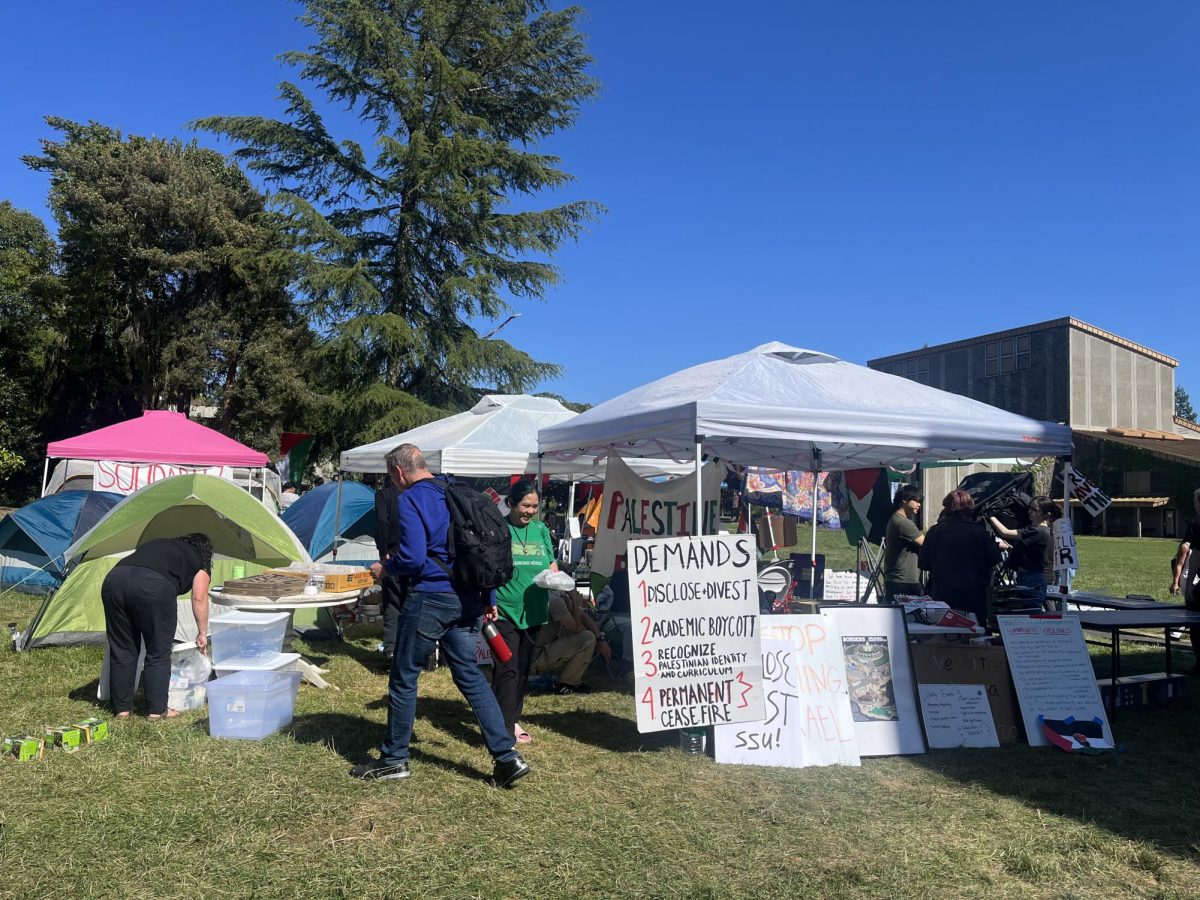

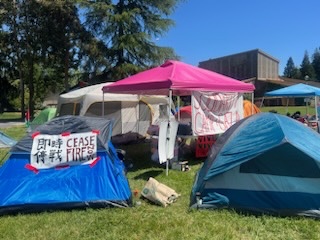
![[Both photos courtesy of sonoma.edu]
Ming-Ting Mike Lee stepped in as the new SSU president following Sakakis resignation in July 2022](https://sonomastatestar.com/wp-content/uploads/2024/04/CC4520AB-22A7-41B2-9F6F-2A2D5F76A28C-1200x1200.jpeg)
